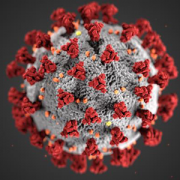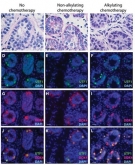Fewer than 60% of young women diagnosed with STIs in emergency departments fill scripts

Fewer than 60% of young women diagnosed with sexually transmitted infections (STIs) in the emergency department fill prescriptions for antimicrobial therapy to treat these conditions, according to a research letter published online May 28, 2019, by JAMA Pediatrics.
Adolescents make up nearly half of the people diagnosed with sexually transmitted infections each year. According to the Centers for Disease Control and Prevention, untreated sexually transmitted diseases in women can cause pelvic inflammatory disease (PID), an infection of the reproductive organs that can complicate getting pregnant in the future.
“We were astonished to find that teenagers’ rates of filling STI prescriptions were so low,” says Monika K. Goyal, M.D., MSCE, assistant chief of Children’s Division of Emergency Medicine and Trauma Services and the study’s senior author. “Our findings demonstrate the imperative need to identify innovative methods to improve treatment adherence for this high-risk population.”
The retrospective cohort study, conducted at two emergency departments affiliated with a large, urban, tertiary care children’s hospital, enrolled adolescents aged 13 to 19 who were prescribed antimicrobial treatment from Jan. 1, 2016, to Dec. 31, 2017, after being diagnosed with PID or testing positive for chlamydia.
Of 696 emergency department visits for diagnosed STIs, 208 teenagers received outpatient prescriptions for antimicrobial treatments. Only 54.1% of those prescriptions were filled.
“Teenagers may face a number of hurdles when it comes to STI treatment, including out-of-pocket cost, access to transportation and confidentiality concerns,” Dr. Goyal adds.
Future studies will attempt to identify barriers to filling prescriptions in order to inform development of targeted interventions based in the emergency department that promote adherence to STI treatment.
In addition to Dr. Goyal, study co-authors include Lead Author, Alexandra Lieberman, BA, The George Washington University School of Medicine & Health Sciences; and co-authors Gia M. Badolato, MPH, and Jennifer Tran, PA-C, MPH, both of Children’s National.










